Kyoto’s Ryoan-ji is best known for its stone garden – a rectangular plot roughly 25 meters by 10 meters featuring several clusters of stones set in a sea of white sand. There is a total of 15 stones, but only 14 are visible from any given vantage point. The stone garden was built near the end of the 15th century. Today, it is one of the most famous zen gardens in the world and has been recognized as a UNESCO World Heritage Site.
Just beyond the walled stone garden lies a wonderful, if under-appreciated, garden featuring meandering paths and a large pond. To get a feel for how the garden is arranged, check out the virtual tours at Kyoto Gardens.org. Thanks to Tom for the tip!
The simple yet beguiling design of the garden makes it a wonderful place for quiet reflection.

My first view of the garden – wow!
Or simply reflection. The crowd, while polite, offers quite a buzzing contrast to the spare garden.
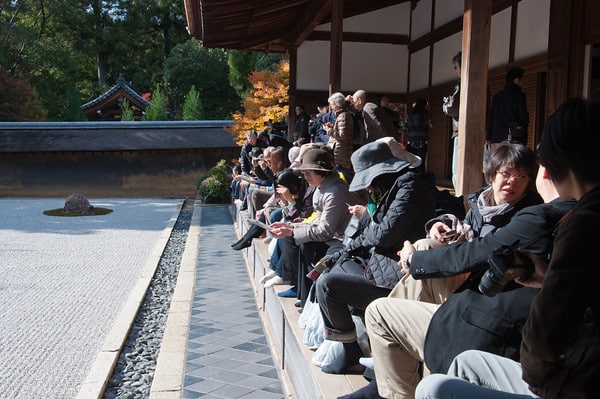
Enjoying solitude together
The stones themselves are great. Some sit just above the surface of the sand, others are propped up on small mounds surrounded by aprons of moss.
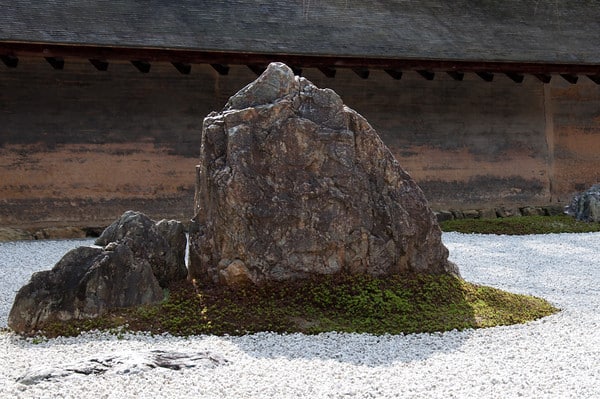
The largest stone and its mate
Most of the sand has been raked along parallel lines save for the ripples around each stone island.
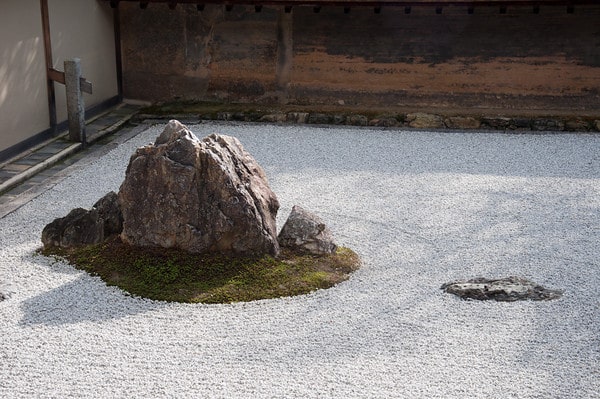
Ripples around stone island
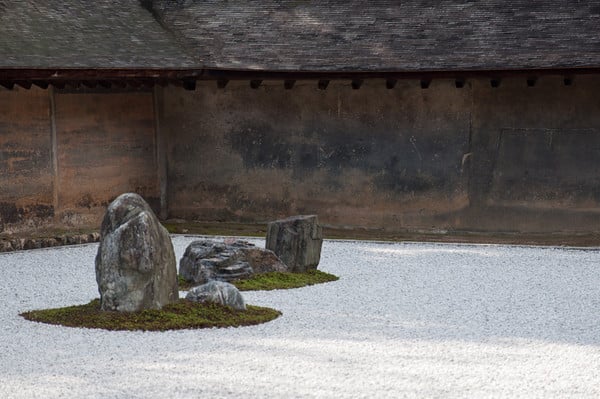
Islands in the far corner
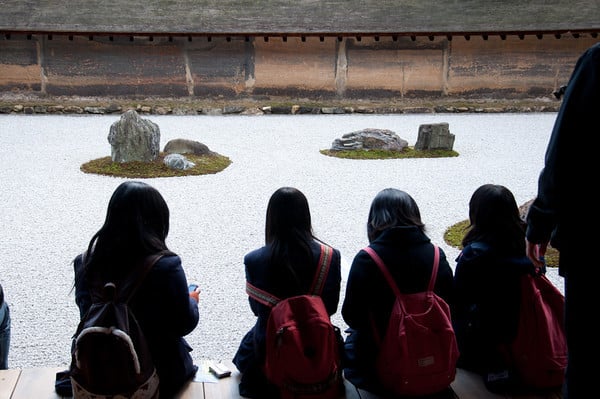
Contemplating stones and/or texting friends
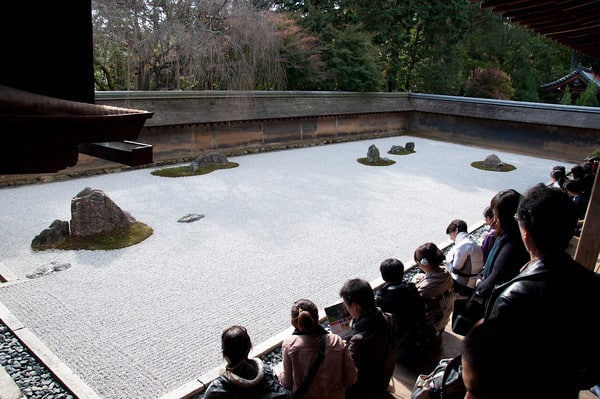
The karesansui (dry garden)
Mossy, maple-covered gardens flanked the sides of the building from which we appreciated the dry garden.
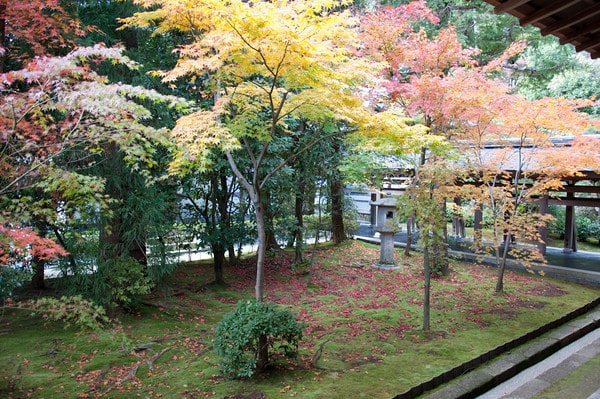
Red leaves on green moss
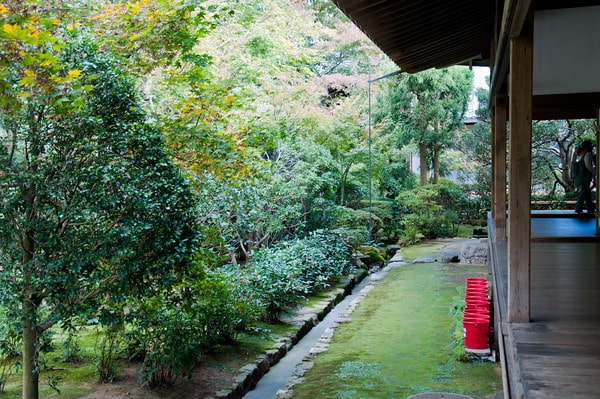
The lush garden behind the temple
Ryoan-ji’s stone washbasin boasts a unique design. It’s lower than many similar basins, and features four Japanese characters or kanji. These are meaningless when read alone, but when combined with the character formed by the basin’s square opening, “kuchi,” (mouth) they become “I,” “only,” “plenty,” “know.” From the temple brochure:
Tsukubai, the stone-wash basin for the tea room, has a unique inscription, ‘I learn only to be contented.’ He who learns only to be contented is spiritually rich, while the one who does not learn to be contented is spiritually poor even if he is materially wealthy.
Wikipedia’s interpretation: “what one has is all one needs.”
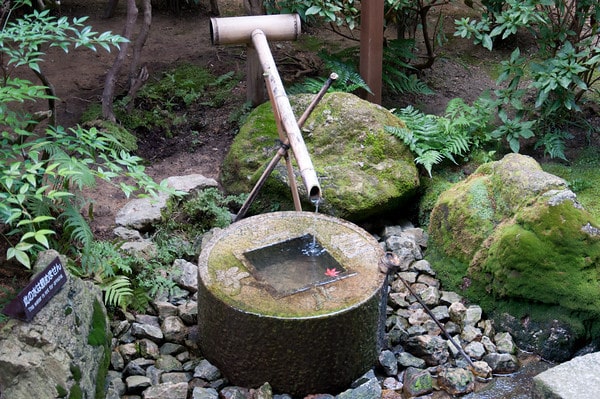
Ryoan-ji’s Tsukubai
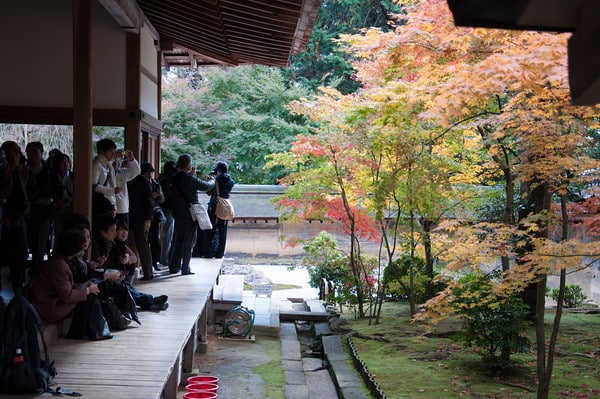
Tourists and maples
Leaving the zen garden is a peaceful experience. The garden is large, and save for the path between the entrance and the dry garden, it is mostly unoccupied.
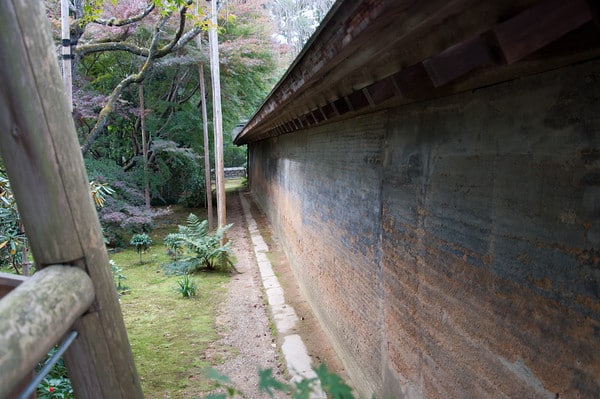
The outside of the garden wall
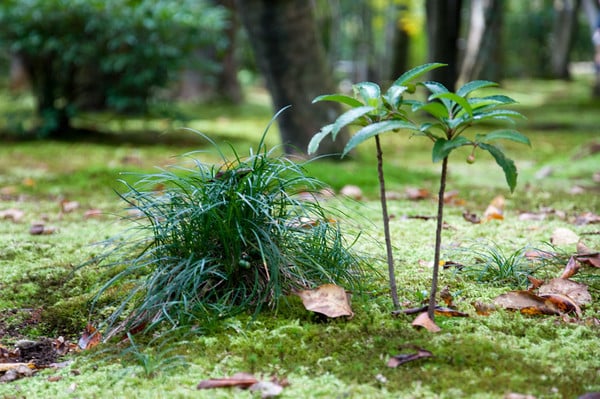
Accents in the moss
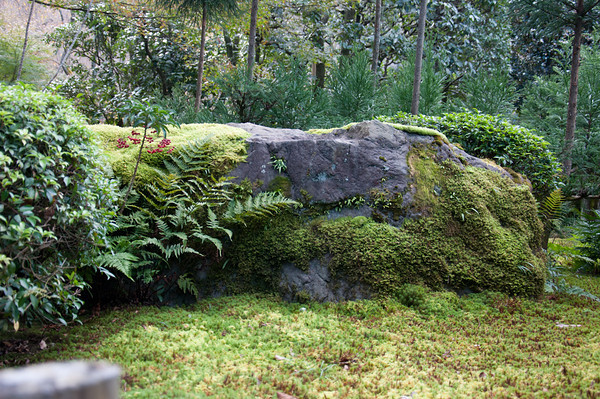
Large moss-covered stone
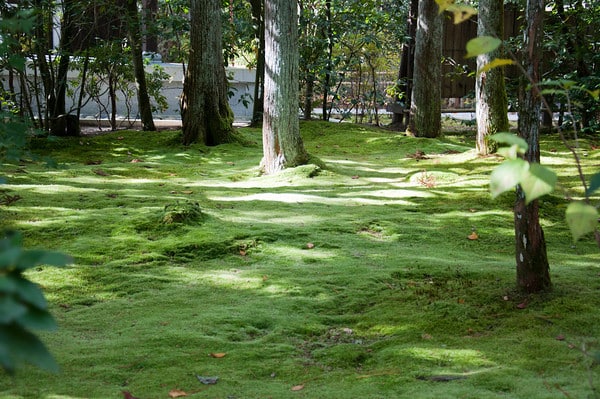
Beautiful moss
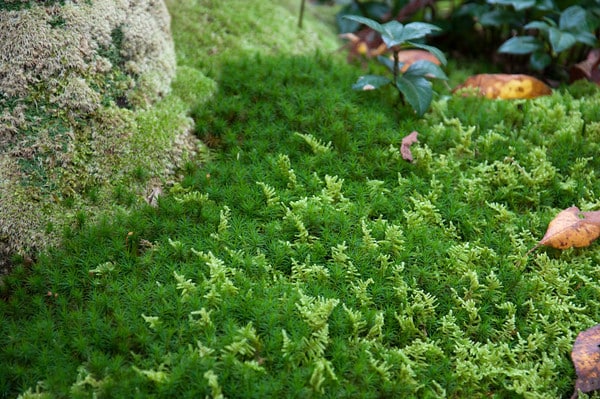
Several kinds of moss growing together
Little side-paths meandered through curious spaces planted with different species at each bend in the road.
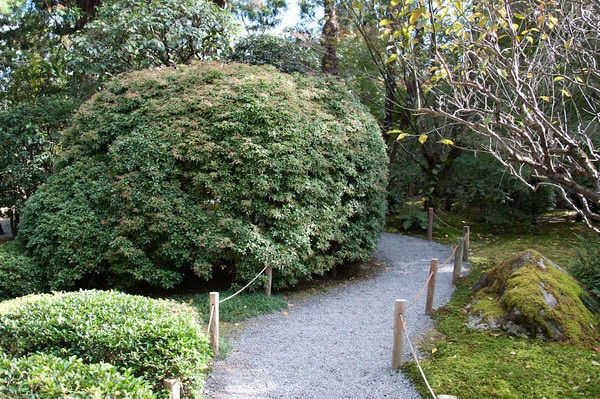
Large pieris
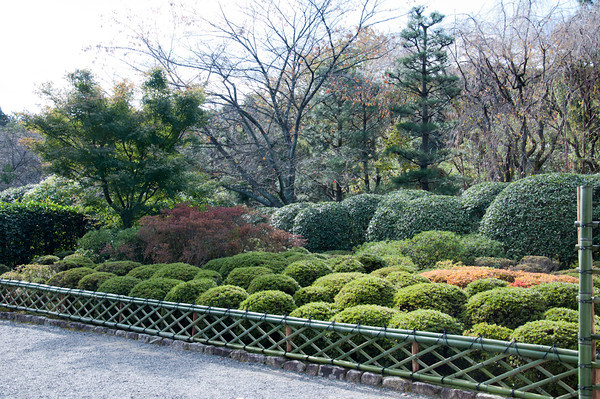
Neatly trimmed azaleas
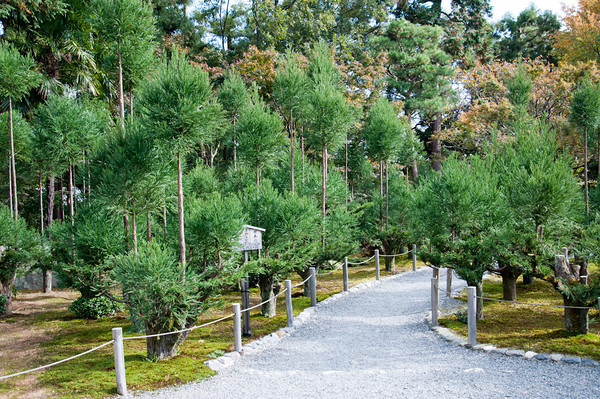
Pom-pom tsugi forest
Japanese maples were generally a sign that one was approaching the lake. Another abandoned path led to an islet in the middle of the pond.
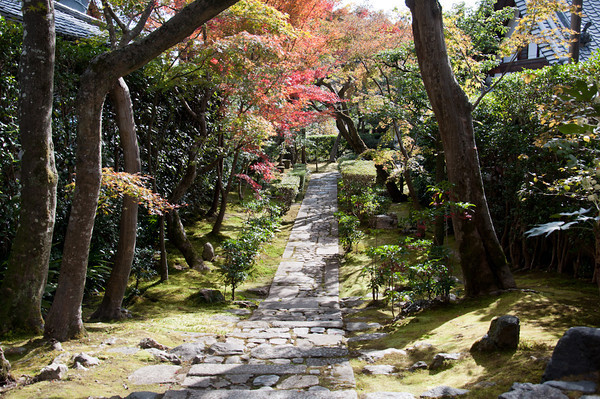
Stone path to islet
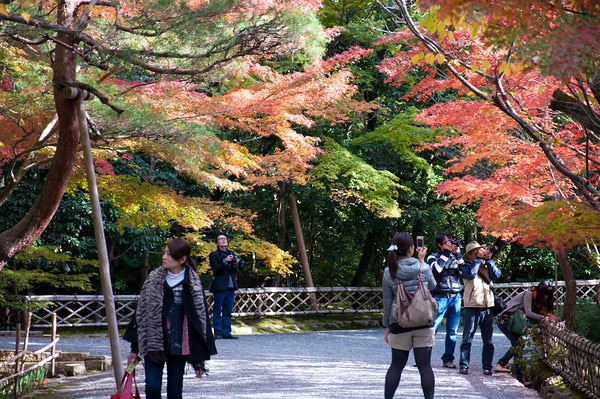
Main path to garden – “Kirei-ne?” (Beautiful, yes?)
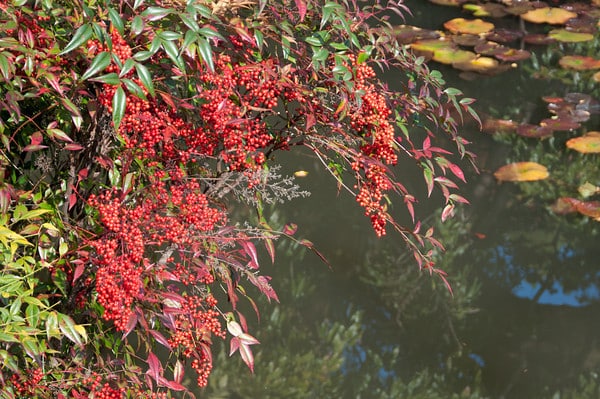
Nandina berries reveal the season
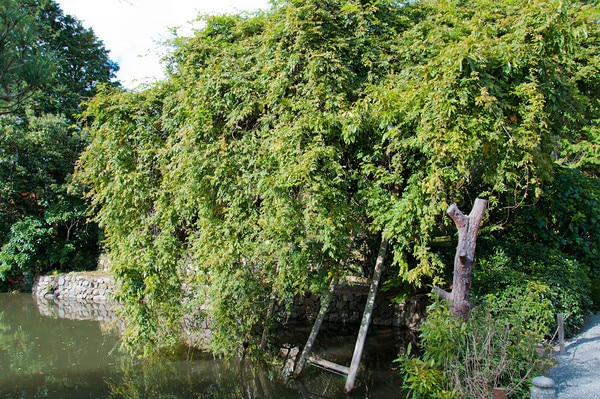
Huge wisteria overhanging the pond
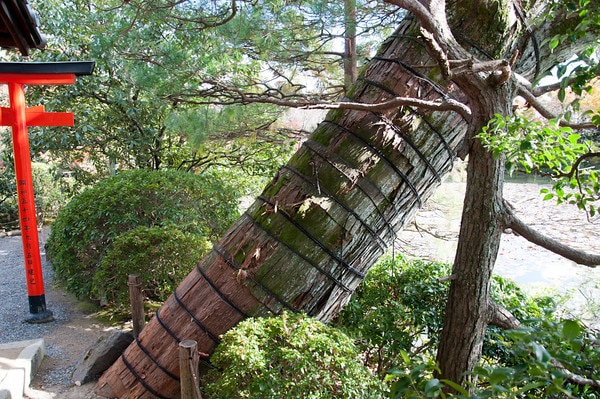
Venerated tsugi trunk wrapped in protective bark
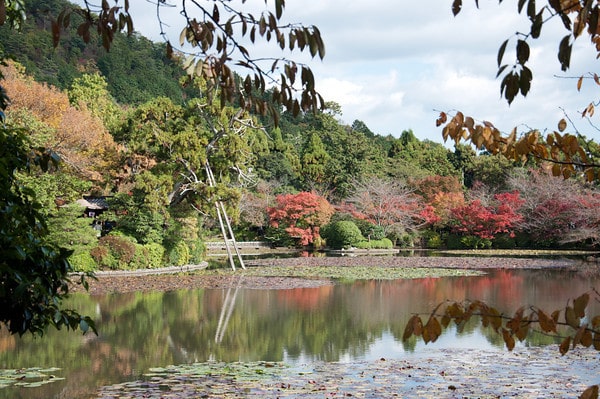
Posts supporting the tsugi on Bentenjima, the islet in the middle of Kyoyochi pond
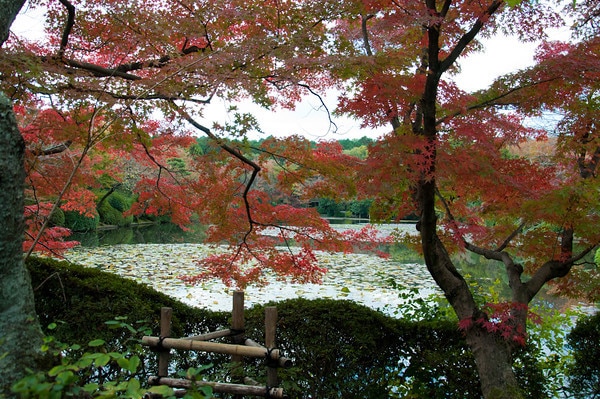
“Ee koyo” (Good fall color)
The pond dates from the 12th century. It originally attracted mandarin ducks, earning it the nickname “Oshidoridera” (the temple of mandarin ducks). I saw a heron on Bentenjima, but no ducks.
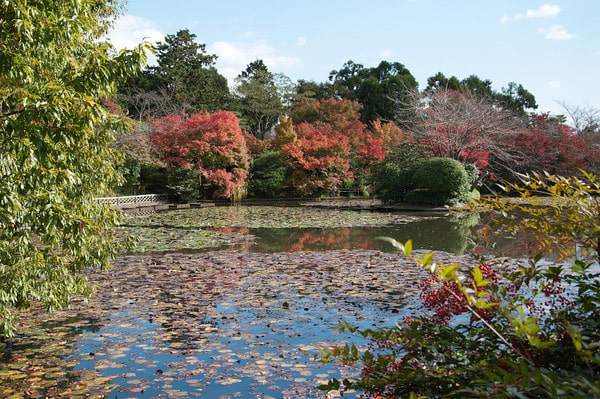
Kyoyochi pond
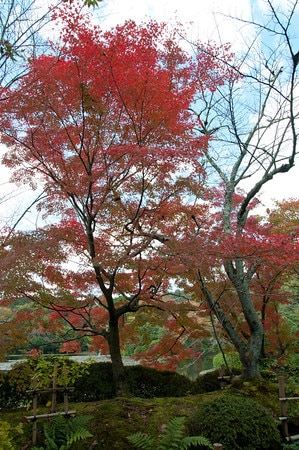
Japanese maple
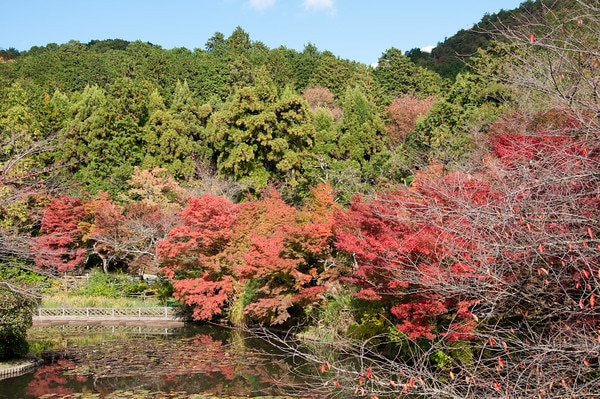
Tsugi forest behind the temple complex
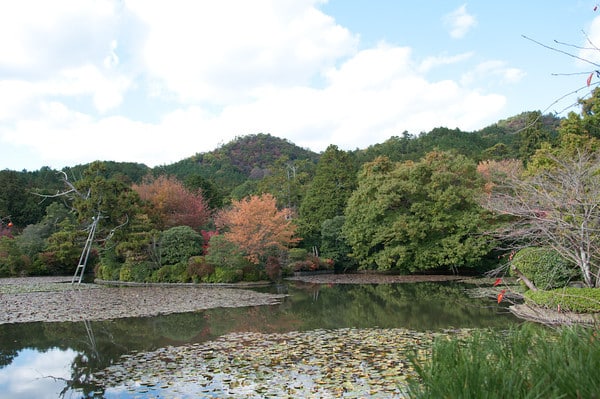
Kyoyochi pond
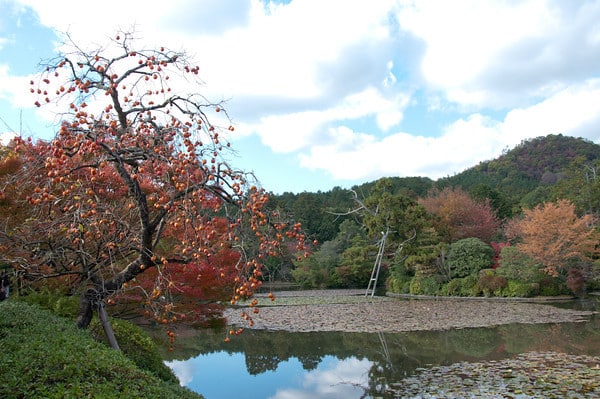
Persimmon next to pond
Next stop: Kinkaku-ji
Subscribe to Bonsai Tonight
New Posts Delivered Every Tuesday and Friday
jacktweeter says
stunning
Judy B says
It’s very informative to see that they are mirroring their natural environment in their bonsai. I wonder if it will become more accepted to mirror what our environs are in America at some point, or whether we will continue to mimic the Japanese. I do admire and appreciate bonsai as it is, but wonder if there is room for us to make our own path, and for it to be accepted in the wider bonsai community.
Steve Moore says
Judy, I’ve heard of Japanese visitors actually scolding Americans for not, in essence, doing what you mentioned: making our own path!
Many of our natives have turned out to be good bonsai material, and there’s really no good reason why bonsai should not become a bridge to appreciation of the landscapes we see around us on this continent. I think the main thing holding us back from faster progress is our lack of corporate self-confidence (if I can phrase it that way) on this point.
(OK, I’m probably preaching to the choir, with you. But “them’s my sentimints,” anyway.)
John says
Hey Jonas, Thanks for the post. I visited this garden in the fall of 2000…on a Bill tour. Like you, my first pass through was with a large crowd and there was certainly a disconnect between the aura of the garden and the noise of the crowd. After spending some time in the gardens away from the stone garden, I stopped back by. I am not sure how but this time I was completely alone. I am not a religious person by any means…but I guess in a sense I am spiritual. As I sat contemplating this garden in total silence, I could hear and feel visitors from the past. It was one of the most interesting, unnerving, and maybe even creepy experiences of my life. It is the one and only time something like this has happened to me, and now, 11 years later, I can still recall it as if it were yesterday…the same chills move through my body. Thanks again for sharing your experiences.
Phil Lanceley says
Beautiful, thanks for sharing.
charles ryder says
I love the earthy hues and texture of the garden wall in particular. Something to aspire to. Any idea what techniques were used? many thanks for the post.
Jonas Dupuich says
Hi Charles, I don’t know anything about the wall beyond Wikipedia’s comment that it is made of clay and has been stained by time. The wall’s age is unmistakable – it’s one of my favorite elements of the garden.